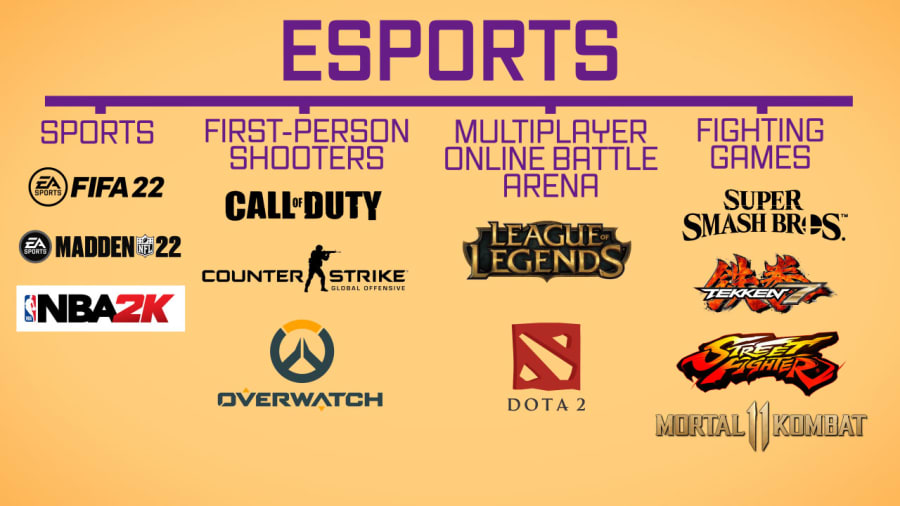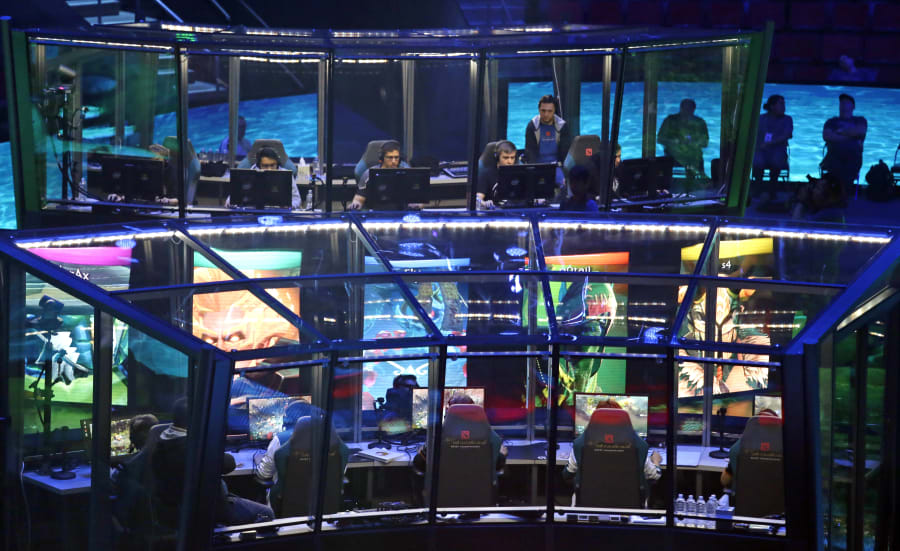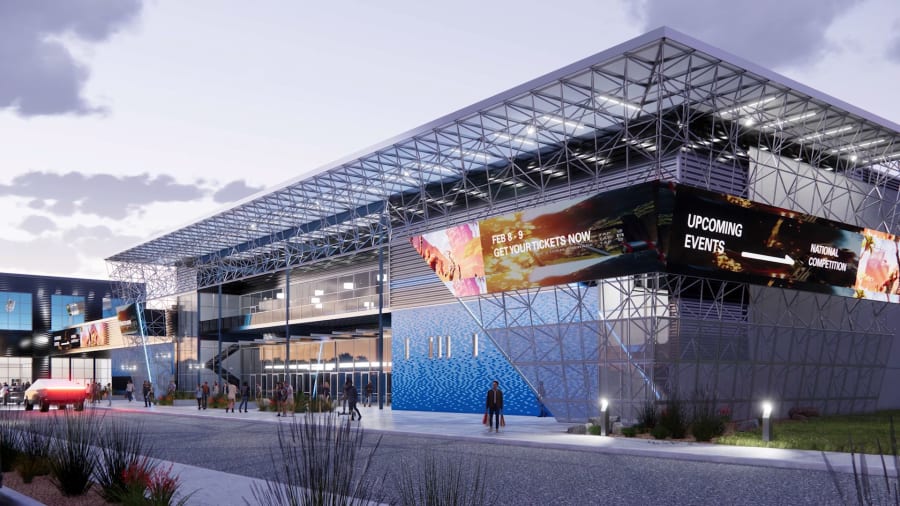SAN ANTONIO – Some consider it just a pastime or a hobby — maybe even an unproductive one. But the notion that playing video games can’t lead to opportunities is starting to become a thing of the past thanks to the rise in popularity of esports.
Competitive video game players now stand to earn huge cash prizes and scholarships. High schools and universities are launching esports programs, and companies are actively scouting esports athletes for jobs in the tech and engineering fields.
In this episode of KSAT Explains, we’re taking a look at what San Antonio is doing to become a big player in this new arena, and the benefits this sport can offer student athletes, professional players and the San Antonio community as a whole.
(Watch the full episode in the video player above.)
What exactly are esports?
Let’s start at the beginning.
Esports stands for “electronic sports.” Electronic as in video games. Esports are essentially just competitive video games.
There are a variety of genres of games included in the esports umbrella: sports, first-person shooter, fighting, just to name a few.

Many of the games played competitively are team-based. And different games have their own distinct leagues with a set number of pro teams and players. Leagues run for a predetermined number of weeks, just like a regular season in the NFL and NBA. Many leagues are international.
Teams or players are ranked based on performance and play each other throughout the season. Eventually, the top teams or layers make it to the playoffs and then the top two teams or players compete in the finals.
The prize pools for these tournaments can be incredibly lucrative. One of the most popular esports games, Dota 2, has its final tournament after a year-long season. The prize pool was just over $40 million in 2021. The winning team ended up taking home more than $18 million to split between five team members.
And you’ve probably heard of a game called Fortnite. Their World Cup Finals had a prize pool of $30 million in 2019.
Of course, these enormous financial returns associated with esports aren’t the norm.
Just like in traditional sports, these high-dollar prizes are extremely competitive and reserved for players who dedicate time and effort into practicing a video game. Getting to that level requires the same kind of commitment that any traditional athlete has to have to get into a professional sports league, like the NBA.

Any gamer can decide to focus on the competitive game of their choice. Once they feel confident enough, they can look up local or regional tournaments to get started in esports.
Many players spend years participating in these smaller tournaments. It’s where they begin to grow their skills. Most of these tournaments charge a small registration fee, which goes into a small prize pool so players can win money as they try to work their way to the top.
Unlike with other sports, there is an interactive livestream element to esports, on streaming platforms like Twitch and Youtube. Many celebrity streamers have made a name for themselves by livestreaming their gameplay for hours at a time, and engaging with viewers. If you’re familiar with esports, you may be familiar with the names of gamers Shroud, Nickmercs and Ninja.
On a larger scale, tournaments can also be streamed. The big ones have production teams dedicated to the production, complete with graphics and commentators - all the elements you would expect from a traditional sports broadcast.
“It’s more than just gaming,” said Chris Saenz, owner of Texas Gaming Empire and the esports director at YMCA of Greater San Antonio. “It’s really a whole industry.”
And even for the majority of us who don’t play video games competitively, there is money to be made. The United States video game industry generates more than $90 billion in economic output every year and Texas generates $4.1 billion annually, according to a 2020 report from the Entertainment Software Association.
The industry doesn’t just include esports - it also includes video game developers and publishers, distributors, video game stores and arcades.
But when we talk specifically about esports, many in the gaming industry believe hosting tournaments can benefit a city’s local economy.
Esports arena coming to San Antonio
San Antonio is one of the growing number of cities that will soon have an esports arena.
Port San Antonio’s Tech Port Center and Arena is expected to be a major competitor for established esports venues. It will be the first in the country built from the ground up, specifically to host and broadcast esports tournaments.

The nearly $70 million center will sit in the heart of the Port SA campus. It will contain a 3,100-seat arena, a food hall and a new home for the San Antonio Museum of Science and Technology.
Tech Port’s general manager, Eric Blockie, told KSAT Explains that he has prepared for the center’s opening by visiting other esports arenas around the state and the country.
“They all have great attributes to them, but I think what we do is we bring the next level of it,” Blockie said. “We bring the data. We bring the technology to it. We bring the ability to broadcast, which we’re really excited about.”
The goal is to bring in large events and esports tournaments, spur economic growth and serve the San Antonio community.
But will this $70 million investment be worth it?
While probably too soon for a definitive answer, we reached out to Chino Lee, the chief revenue officer at Esports Stadium Arlington, or ESA, one of the stadiums Blockie recently visited.
There are a couple things Lee said have been key to their success: strong partnerships, support from the City of Arlington and the ability to diversify, making sure they’re not billing themselves as an arena only for competitive gaming. They also host other events, which is something the Tech Port Center and Arena plans to do. Still, Lee told us that about 60% of ESA’s events every year are esports-specific.

Port SA’s decision to invest millions of dollars into an esports arena wasn’t just due to the potential economic impact of events. It’s also because of the talent they hope to attract.
“If you look at our aerospace customers, robotics, cybersecurity, even the military missions they’re all looking at esports and gaming as a new area to find, recruit, retain talent, a way to optimize their operations and virtualize their training,” said Will Garrett, vice president of talent and technology development and integration at Port SA.
And for some, the Tech Port Center represents something else: an opportunity to transform the lives of local students.
“The Tech Port Center, I think, will be an eye-opener for anybody that’s young, because you have everything there for you,” said Sam Elizondo, the center’s director of LAN gaming and esports. “It just gives me hope in a time where there may not be as much, especially for our youth ... just great satisfaction to know we’re building something here that I know is going to change lives through a medium that I genuinely and truly love.”
Esports in local schools
Plans for the Tech Port Center include providing developmental programs for both professionals and students, to give them exposure to the gaming world they might not otherwise get.
But even before these plans were set, more local children were getting familiar with esports, because more schools are creating esports teams.
Meet some of the students and instructors involved in the esports programs at St. Mary’s University, University of the Incarnate Word and Jefferson High School by watching the video below.
What do you want us to explains next? Let us know in the prompt box below.





